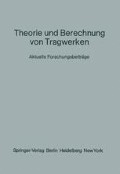Zusammenfassung
Aluminium kommt in der Natur, wie viele andere Gebrauchsmetalle, an Sauerstoff gebunden vor. Durch Energiezufuhr wird vom Metalloxid das reine Metall gewonnen; die Metallatome liegen nun auf einem höheren Energieniveau im Gitterverband des metallischen Zustandes und werden, solange keine Schutzschicht vorhanden ist, sofort in den energieärmeren Zustand des Oxides übergehen. Die natürliche Oxidhaut des Aluminiums (ca. 0,1 μm dick) bildet einen dichtschließenden, widerstandsfähigen Film an der Oberfläche, der, wenn intakt, vor weiterem Korrosionsangriff schützt.
Access this chapter
Tax calculation will be finalised at checkout
Purchases are for personal use only
Preview
Unable to display preview. Download preview PDF.
Literaturverzeichnis
Craig, Jr.H.L., D.O. Sprowls and D.E. Piper: Stress-Corrosion Cracking. in: Handbook on Corrosion Testing and Evaluation by W.H. Ailor. John Wiley and Sons, New York.
Dix, E.H. and R.H. Brown: The Stress Corrosion of Metals. in: Metals Handbook. American Society for Metals, 1948.
Brungs, D.: Untersuchungen zum Mechanismus der Spannungsrißkorrosion bei AlZnMg3. Dissertation, T.H. Aachen, 1969.
Normen: DIN 50 900, Bl. 1: Korrosion der Metalle, Begriffe.- DIN 50 905; Prüfung metallischer Werkstoffe, Korrosionsversuche, Richtlinien für die Durchführung und Auswertung. — DIN 50 908; Prüfung von Leichtmetallen -Spannungskorrosionsversuche.
Markworth, M.: KupferhaTtige AlZnMg-Knetlegierungen — Eigenschaften und Entwicklungstendenzen. ALUMINIUM 48 (1972), 11, S. 724–733.
Steinhauser, W. und G. Urban: Neuzeitliche Prüfmethode für metallische Werkstoffe zur Beurteilung des Verhaltens gegen Spannungsrißkorrosion mit Schadensfallbeispielen. ALUMINIUM 45 (1969), 3, S. 156–161.
Altenpohl, D.: Aluminium von innen betrachtet. Aluminium-Verlag, Düsseldorf, 1970.
Fontana, M.G. und R.W. Staehle, Hrsg.: Advances in Corrosion Science and Technology. Plenum Press, New York, N.Y., 1972.
Stress Corrosion Cracking of Metals — A State of the Art. ASTM, Phi la., Pa., 1972.
Statische, dynamische und SRK-Versuche mit Prüfstäben aus AlZnMgl F36 Grundmaterial und Stumpfstöße. Bericht Nr. 5886/2 der Versuchsanstalt für Stahl, Holz und Steine der Universität Karlsruhe, 1973.
Author information
Authors and Affiliations
Editor information
Editors and Affiliations
Rights and permissions
Copyright information
© 1974 Springer-Verlag, Berlin/Heidelberg
About this chapter
Cite this chapter
Kosteas, D. (1974). Spannungsrißkorrosion bei Aluminiumlegierungen. In: Möhler, K., Valtinat, G. (eds) Theorie und Berechnung von Tragwerken. Springer, Berlin, Heidelberg. https://doi.org/10.1007/978-3-642-93032-4_13
Download citation
DOI: https://doi.org/10.1007/978-3-642-93032-4_13
Publisher Name: Springer, Berlin, Heidelberg
Print ISBN: 978-3-642-93033-1
Online ISBN: 978-3-642-93032-4
eBook Packages: Springer Book Archive

